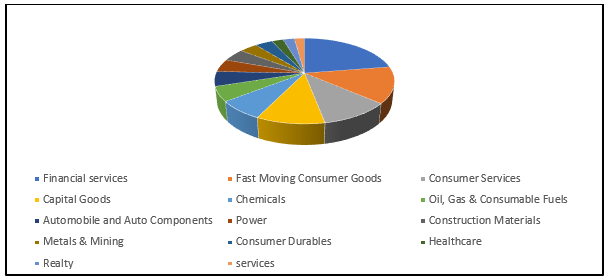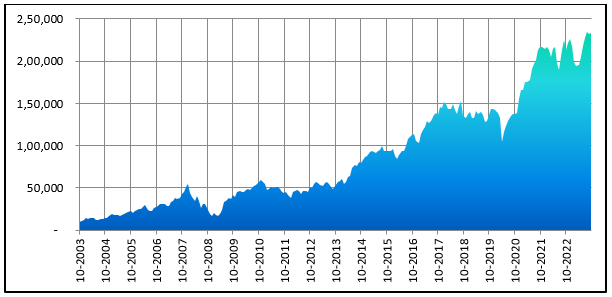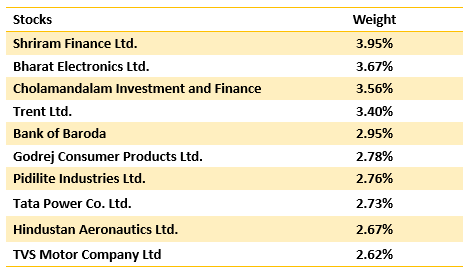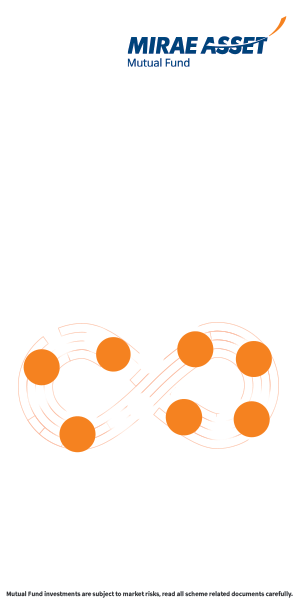What is Nifty Next 50 Index

What is the Nifty Next 50 Index?
The top 50 companies based on free-float market capitalization and satisfying the liquidity and impact cost criteria are constituted to form Nifty 50 Index.
The next 50 large cap companies from Nifty 100 Index constitute the Nifty Next 50 Index. The Nifty Next 50 Index together with Nifty 50 Index represents the universe of large cap stocks (Top 100 stocks by market capitalization). The Nifty Next 50 index is calculated on a real-time basis (daily) and rebalanced semi-annually in March and September based on data for six months ending January and July respectively.
Free float market capitalization is based on free-floating i.e. shares held by the public. Shares held by the promoters and their families, trusts, management of the company, and the Government are excluded from free market capitalization. In the free float market capitalization-based index, the companies with the highest free float market cap will have higher weights. Both the Nifty 50 Index and the Nifty Next 50 Index are based on the free-float market capitalization method. As of 29 September 2023, the Nifty Next 50 Index constituted 13% of the total market capitalization of all stocks listed on the NSE (as of 29 September2023, source: AMFI).
Composition of Nifty Next 50 Index
The chart below shows the industry sector composition of Nifty Next 50 (as of 29th September 2023, source: National Stock Exchange).

Source: National Stock Exchange, as of 29th September 2023
Performance of Nifty Next 50 Index
The chart below shows the growth of Rs 10,000 investment in Nifty Next 50 Total Returns Index (adjusted for dividends) over the past 20 years (ending 29th September). Over the past 20 years, Nifty Next 50 TRI has given more than 17% CAGR returns. Over the same period Gold has given 12.3% CAGR returns, while Fixed Deposits have given 7% average CAGR returns.

Source: National Stock Exchange (as on 29th September 2023), Advisorkhoj Research. Disclaimer: Past performance may or may not be sustained in the future.
Top constituents of Nifty Next 50 by weightage

Source: National Stock Exchange, as of 29th September 2023
Why is the Nifty Next 50 index important?
The NIFTY Next 50 is important for several reasons, contributing to its significance in the Indian financial landscape:
- Market Representation: Nifty Next 50 Index comprises of the 51st to 100th large cap companies in India, as per AMFI classification. Large cap companies occupy leadership positions in their respective industry segments and enjoy competitive moats. Competitive moats generally enable companies to maintain and grow their market share over longer horizon.
- Diversification: The NIFTY Next 50 provides diversification opportunities for investors. The index exposure to 14 industry sectors and 50 stocks. Nifty Next 50 ETFs provide more diversification in terms of sector exposure as well as concentration risk compared to Nifty. Maximum single stock exposure in Nifty Next 50 ETF is around 3.95% (as on 29th September 2023).
- Growth Opportunities: The index includes companies that are considered to be on the verge of becoming industry leaders. Since the Nifty Next 50 companies are smaller compared to Nifty 50 companies their growth potential is higher. In the last 5 years, the EPS growth of Nifty Next 50 was 21% CAGR (versus 17% CAGR EPS growth of Nifty 50 companies). Investing in the NIFTY Next 50 provides an opportunity for investors to participate in the growth story of these emerging companies, potentially capturing higher returns as they expand and mature.
- Graduation to NIFTY 50: Companies in the NIFTY Next 50 have the potential to graduate to the NIFTY 50 as they grow and demonstrate sustained market capitalization and influence. Tracking the performance of the NIFTY Next 50 allows investors to identify companies that may transition to the frontline index and potential valuation rerating. Suggested reading: What is Nifty 50 ETF?
How to invest in Nifty Next 50 Index?
Exchange Traded Funds (ETFs) is one of the best ways to invest in market indices. ETFs, in their composition, replicate a benchmark index and aim to reduce tracking errors i.e. difference in the performance of the index and performance of the ETF. ETFs do not aim to beat the index but merely replicate their performance. Since ETFs are passively managed, their cost is relatively lower than that of an actively traded mutual fund scheme. Lower cost will generally result in higher returns for the same level of performance.
You may also like to read what are the benefits of investing in ETF?
Mutual Fund Investments are subject to market risk, read all scheme related documents carefully.
RECOMMENDED READS
Mirae Asset Global Investments is the leading independent asset management firm in Asia. With our unique culture of entrepreneurship, enthusiasm and innovation, we employ our expertise in emerging markets to provide exceptional investments opportunities for our clients.
Quick Links
- Fund Manager Interview - Mr. Neelesh Surana - Chief Investment Officer
- Fund Review - Mirae Asset Emerging Bluechip Fund : Best Midcap Mutual Fund in the last 6 years
- Fund Review - Mirae Asset India Opportunities Fund: One of the best SIP returns in last 8 years
- Fund Manager Interview - Mr. Neelesh Surana - Chief Investment Officer
- Our Articles
- Our Website
- Investor Centre
- Mirae Asset Knowledge Academy
- Knowledge Centre
- Investor Awarness Programs
Follow Mirae Assets MF
More About Mirae Assets MF
POST A QUERY






